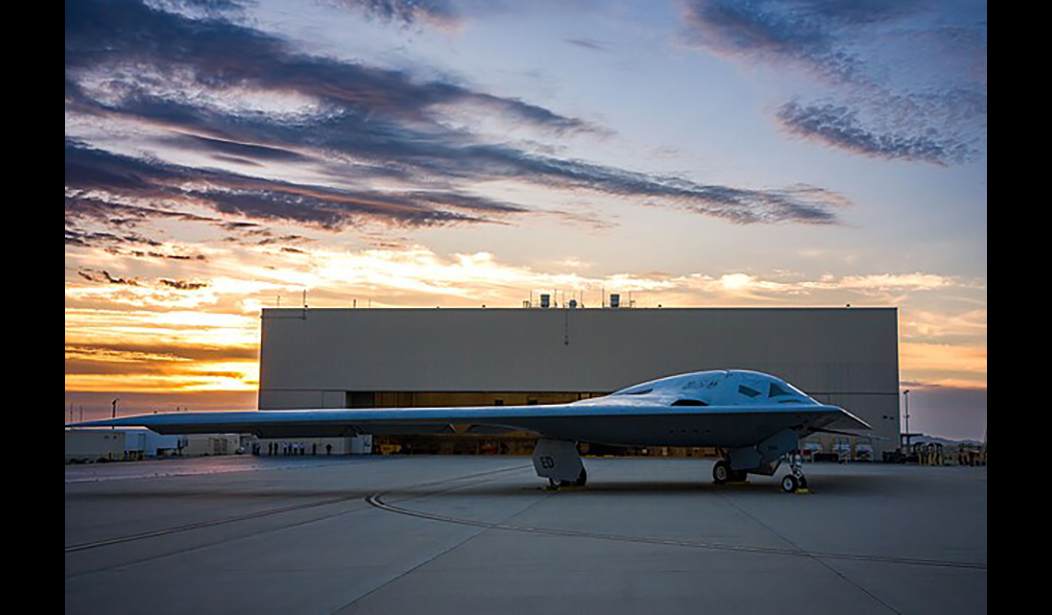On Friday, the newest weapon in the arsenal of the United States Air Force made its debut flight. The first B-21 Raider stealth bomber flew out of a facility in Palmdale, California, where it was developed by contractor Northrop Grumman.
“The B-21 Raider is in flight testing,” Air Force spokeswoman Ann Stefanek said.
Such testing is a critical step in the campaign to provide “survivable, long-range, penetrating strike capabilities to deter aggression and strategic attacks against the United States, allies, and partners,” Stefanek said.
The B-21 is the first new American bomber in Air Force inventories in over 30 years, the last being the B-2 Spirit and before that, the B-1 Lancer and, of course, the venerable and still-serving B-52 Stratofortress.
Stealth, it's important to note, is a considerable force multiplier. The Iraqi military learned this the hard way in 1991, when the first generation of stealth attack planes entered the operation in the form of the F-117 Nighthawk. While the exact stealth capabilities of the B-21 are not a matter of public information (and rightly so), it can be safely assumed that it is advanced well beyond its predecessor, the B-2 Spirit. With these expected capabilities, the U.S. Air Force will have as-yet unmatched penetration and deep-strike capabilities; and like the B-2, the B-21 is capable of carrying nuclear weapons.
What is interesting is that the B-21 will come in manned and unmanned variants, in addition to its other new technologies.
The Air Force is planning to build 100 of the warplanes, which have a flying wing shape much like their predecessor the B-2 Spirit but will incorporate advanced materials, propulsion and stealth technology to make them more survivable in a future conflict. The plane is planned to be produced in variants with and without pilots.
The B-21 nearing the end of its development comes at a, shall we say, interesting time in the geopolitical sphere. Besides the ongoing wars in Ukraine and Gaza, the United States' relationship with long-time rival Russia is growing tense, with the U.S. and its NATO allies recently pulling out of a late Cold War-era treaty limiting conventional forces in Europe. The U.S. Army is not only stepping up recruiting advertising in the face of failed recruiting goals, but there has been a distinct change in the form and tenor of those advertisements.
In the 4th or 5th century A.D., Roman author Publius Flavius Vegetius Renatus wrote in his tract Dē Rē Mīlitārī (Concerning Military Matters) the words Si vis pacem, para bellum, or "If you want peace, prepare for war." The United States military, as some of us old soldiers, Marines, and sailors will attest, seems to have fallen distinctly short in that core mission for the last few years. Perhaps new equipment like the B-21 will attract young men with the Right Stuff to get us back on track.
In other defense news, the U.S. Army is looking into a $3.1 billion boost in ammunition production. Draw what conclusions you will from that.














Join the conversation as a VIP Member